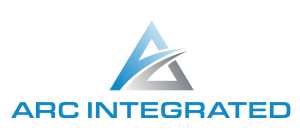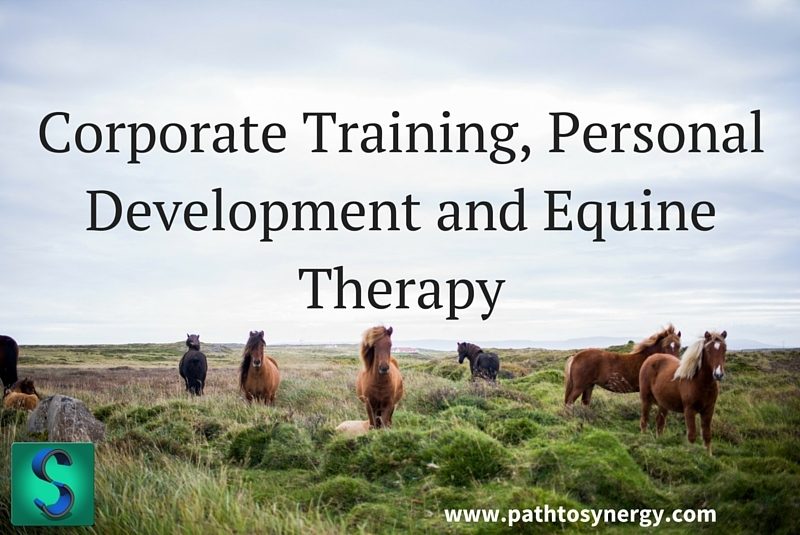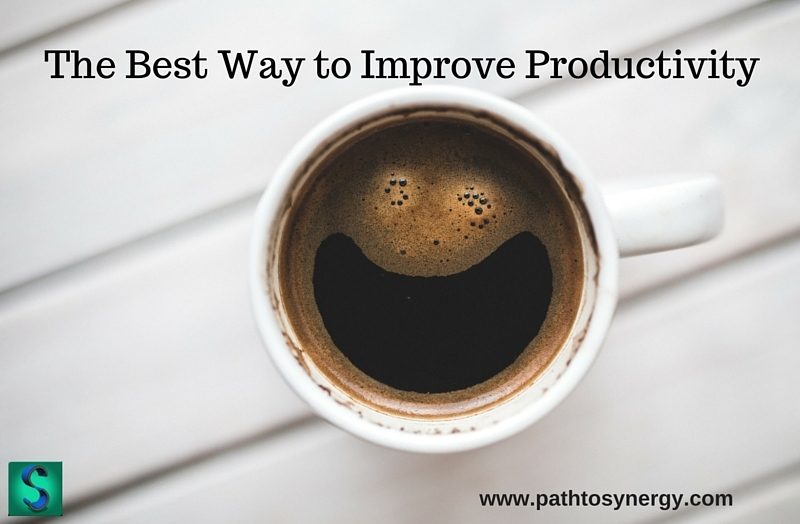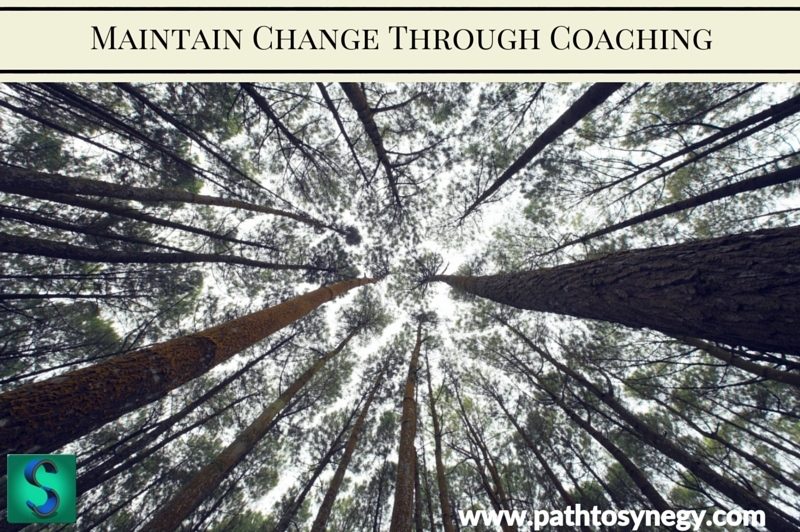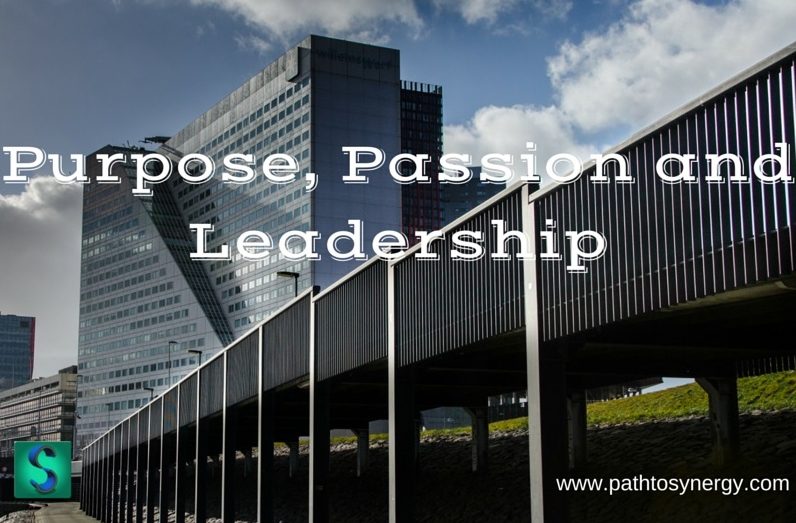The Best Listener at Work
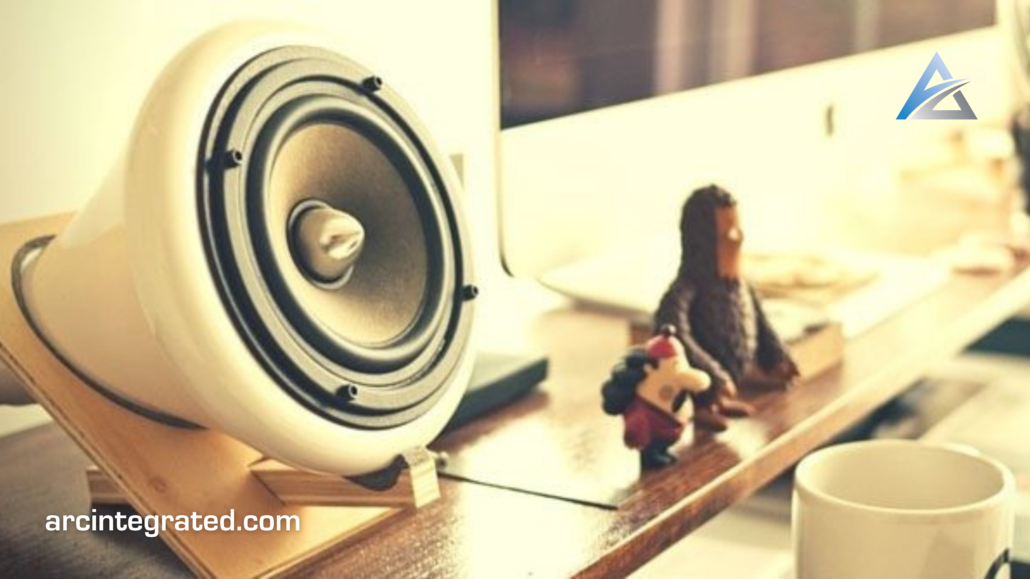
You may wonder why being a good listener at work is really valuable. However, if you experiment with improving your workplace listening skills, you will see changes. In the fast past, high demand jobs so many of us have, really good listening may be something of a novelty. This may because of the ever-impending deadlines, the many distractions we have or the workplace stress. If you commit to being the best listener at work, you may notice that some of these challenges shift.
So how might listening skills impact your work place experience? Well, consider your experience now. How well do you feel heard at work? What do you notice about people how are really present with you when communicating vs. those that are anxious to move to the next “to do”? I would imagine that when someone is really present with you that it is easier to talk to them, you may feel more connected or more at ease. What if you were that person for everyone else? How might this impact your workplace experience if people knew that when they spoke to you, that they could count on you to really pay attention?
Particularly if you are a leader, really good listening skills go a long way. Being able to connect, understand and communicate effectively with your employees is a crucial component of an effective leader. According to a study in The Journal of Occupational Health, it was found that… “psychological stress reactions were lower in subordinates who worked under supervisors with high listening skill, while no statistically difference was observed among older subordinates.”
So if we know that our listening skills have an impact on our overall work stress, it seems like a great advantage for us to actively improve these skills. Below you’ll find three tips to improve your listening skills
1.) Offer more clarity
Repeating something back to someone in the way that you heard it will help to reduce miscommunication. Repeating a statement also offers the opportunity for this person to add additional clarification if necessary. This way of “active listening” ensures that this person is being understood correctly and shows them that you are paying attention.
2.) Focus
Sometimes we can get caught up in how we are going to respond to something. Thinking of what to say next reduces our ability to listen to what someone is saying. Attending to what someone is saying without focusing on how to respond will create stronger communication. Remain focused on the present moment and really digesting what it is that someone is communicating.
3.) Breath
Often times at the workplace we are moving a million miles a minute, which reduces our ability to take in information in any given moment. Taking a few moments to breath as you speak with someone will help you to be more present and process what they are saying more effectively. Before you speak or when you are feeling overwhelmed, stop and take a deep breath. This may sound trivial but can do wonders for not only stress but your ability to communicate and listen effectively.
After you’ve had the opportunity to put these behaviors to the test, I would invite you to make a comment below. I would suggest that in order to notice results you may have to practice one or all three for at least four times a week for three weeks. After you’ve practiced, consider answering the following questions –
How did they work if they did at all?
What did you learn?
How long did you practice each new behavior?
Best,
Michael
P.S. If you want to learn more about how to improve your listening skills at work, in order increase influence, engagement and build effective relationships, we can help. Schedule a free consult today to see if are a fit to work together
The Value of Showing Up
/by MichaelCorporate Training, Personal Development and Equine Therapy
Based on the title you may be thinking that these things are totally un-related, but you’re here, so thank you! I lead a group therapy session a couple of times a week with about 10 attendees and the topic of animals and our connection to them recently came up. We discussed different kinds of therapy approaches, like dog therapy, or equine therapy for example. The same day I had a friend bring this topic up, which I figure is enough for me to write down some thoughts, since this is something I have experience with. The interesting part is corporate training, personal development and equine therapy, are in fact, connected.
A few years ago I went through the process of getting certified through the Equine Assisted Growth and Learning Association (EAGALA). This association is the international leader in equine training specifically for mental health and personal development purposes. What this means is that they certify psychotherapists and horse professionals, to work together to facilitate different kinds of experiential learning. These experiences can be for the purposes of individual development, individual therapy, group therapy, couples therapy or corporate/group training.
So the question may be, what one thing has to do with the other? For someone that has never seen this process unfold, it may not seem like a relevant fit. The way horses and horse professionals can help to work through challenges with individuals or a group, is essentially through observation. For example, a typical Equine Assisted Psychotherapy (EAP) or Equine Assisted Learning (EAL) session, consists of the facilitators (therapist and horse professional) giving the individual or group a task to accomplish with the horse. This task could be to help move the horse through a gate, move the horse around an object or help a horse move in a direction without touching it. There are many activities/tasks that can be implemented but they are all ground activities, not requiring the participant to ride the horse.
During and after these activities both the therapist and horse professional make observations of how the person or people are engaging with the horse and each other. What shows up here is powerful. Just like in experiential education, when giving a group a task to accomplish together there are markers that form organically – personality styles, communication style, natural leaders/followers, conflict and/or resolution of conflict etc. What is most interesting about the EAP/EAL process is that the horse acts as a mirror for behavior and engagement.
During my time training as an EAGALA practitioner I was astounded by how fast things came to the surface through this process. For instance, when watching a family interact with an animal and attempt a task, it became immediately obvious what kinds of challenges the family had in their communication with each other. In this example it was easy to see which member wanted to control and override the input from other members of the family. This created conflict of course and made it more challenging for the family to accomplish the assigned task. Part of the feedback came from the horse as it experienced the intensity from one individual. Part of the feedback came from other members as they became frustrated with the challenge of the task, which the horse also reflected. It was powerful to watch.
So how did their communication styles come up you ask? This is the value of working through an EAP/EAL program. The response you get from a horse is authentic, immediate and not bound by the same kind of bias that people have. In addition, the horse professional helps to make observation of behavior of the horse while the therapist observes how the person is engaging.
Horses are able to pick up on the subtleties of behavior and intention because they are sensitive prey animals. So this means that if there is fear, anger, ease, curiosity or frustration – the horse will give feedback to these emotions/behaviors. Because the horse is so sensitive it gives immediate clues and reactions to the behaviors and intentions of individuals and groups. Some of these behaviors would be easily recognized while others are more subtle, which is why it is helpful to have a horse professional present. In the therapeutic context, understanding and processing behaviors and emotions can impact personal development and resolution of some of the challenges.
At this point you may be asking if this type of intervention has any credibility from research. The answer is yes, it absolutely does. For example, one study found that well-being and reduction in psychological distress immediately improved after EAP and held stable after six months. For a more detailed look at research as it compares to traditional therapy approaches, consider this article that acts an overview and comparison.
So how does this therapeutic approach have anything to do with corporate training or leadership? This is where EAL enters the picture. EAL differs from EAP in that EAL focuses more on education and learning rather than a therapeutic approach of resolving mental health issues or challenges.
In an EAL setting valuable skills can be obtained that would certainly impact the effectiveness of an organization. For example, often times EAL is done with teams on an organization in order to improve communication skills, leadership or team building. This process is still facilitated by a mental health professional and horse professional, but the intention is different.
In an EAL session with a team of professionals for instance, a simple task will be given to the team to accomplish with the horse. This task results in emerging behaviors and communication styles that will then be valuable for the team to later process. For instance, within a given task there may be leaders that emerge, communication that happens (or doesn’t), response style of collaboration or anger. In addition, there may be partnerships that naturally form on the team that previously did not exist or resentments that manifest that perhaps hadn’t previously.
The same question may emerge regarding efficacy of this particular kind of experiential education. One of the more interesting pieces of research on EAL has to do with Emotional Intelligence, a current point of focus in many leadership and team building approaches. This research is a great review of the field of EAL as well as Emotional Intelligence. The research found positive results for EAL as an intervention for improving Emotional Intelligence.
So, as we’ve seen, horses, therapy and leadership are in fact related! For more information about EAL and EAP, I recommend visiting the EAGALA website – http://www.eagala.org/. For more information on Emotional Intelligence as it relates to leadership, consider this article by Daniel Goleman. If you are interested learning more about this topic or discussing a potential workshop to build team or leadership skills, please contact us!
Keep Learning,
Michael
P.S. If you are curious to learn more about personal development, workplace challenges, interpersonal dynamics, goal achievement and a wide variety of other topics, sign up today! www.www.arcintegrated.com/newsletter. It’s totally free.
You’ll also receive a FREE tip sheet with Five Strategies to Build Motivation!
The Best Way to Improve Productivity
There are an endless amount of resources out there for how to improve productivity. In my search I did not find a definitive answer to the best way to improve productivity. I think there is an answer to this question though. The best way to improve productivity….is your way.
Finding out ways to hack your own laziness, distraction or “busy” lifestyle is tricky. But the most effective way to improve productivity will be the one that is most connected to you. A place to start when identifying what kinds of practices to experiment with may be the endless lists online, such as this one on – boosting productivity in real life. As you may notice, I even wrote one of these tips. The tips and strategies are definitely good to start with.
Experimentation and practice is where the rubber hits the road. The next step is exploring the strategies in a way that answers the question of – how does those strategy resonate with me? Using strategies that are most connected to who you are will yield the best results.
There are certainly some exercises and strategies that are more about self-exploration than others. Here is a short list of strategies that may help to improve productivity, but more importantly offer the opportunity to explore what’s holding you back, and who you are.
Personal Development and Productivity
Take a vacation
This may seem counter intuitive since taking a vacation is not necessarily the most “productive” of activities. However, letting go of some of the demands and hustle for a few days can help you to re-identify what is truly important, as well as give you a boost of energy when you return.
Create a daily practice
When looking at habits and common traits of successful people, one thing is usually consistent, they have some sort of regular practice. Having a daily practice helps to create mindfulness, discipline and routine – all things that impact productivity.
Practice discipline, everyday
Similar to the daily practice, focusing on ways to practice discipline can help to build routine and productivity in many areas in life. Discipline can be practiced in a number of ways through fitness, healthy eating, work duties, behavior in relationships, self-reflection and many other aspects in life. The practice of the discipline itself may be just as important as the goal related to it.
Get up and move
You may have heard the recent commentary about sitting being the new smoking. There is substantial research to back up the idea of sedentary lifestyle greatly impacting health, wellbeing and productivity. Exploring ways that help you to enjoy regular daily movement will make these little breaks easier to commit to and more likely to stick. Again, this is about personal exploration of what works for you.
Explore your passions and purpose
Understanding what you are passionate about will help in building strategy around all of the previously mentioned tips. If you aren’t sure, that’s ok, start experimenting. Start with these two questions –
- What would I love to do every day if I had an unlimited amount of money?
- If I had unlimited resources and I could only do one thing to help the world, what would it be?
How have you enhanced your own productivity?
Thanks,
Michael
5 Strategies for Effective Boundaries in the Workplace
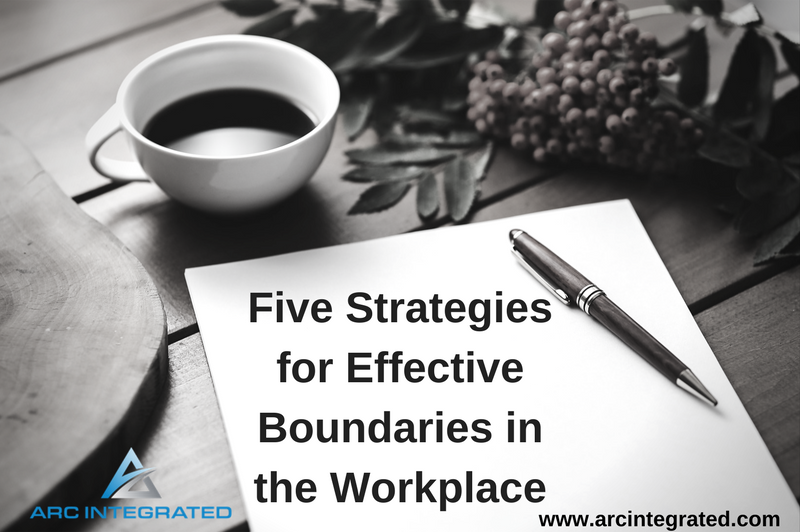
Five Strategies for Effective Boundaries in the Workplace – Arc Integrated
I was once featured on Livestrong in an article about setting effective boundaries so that you do not become emotionally or even physically drained. Sometimes not having clear boundaries can do this. Without good boundaries we can feel exhausted. Since for most of us the majority of our time is spent at work, I wanted to elaborate on how to set effective boundaries in the workplace.
Having clear workplace boundaries not only impacts you, but all those you work with as well. Having clear boundaries in the workplace helps to improve productivity, decrease stress, helps foster good relationships and improves motivation. Although setting boundaries is complicated based on the nature of the work and relationship, a study that examined boundary setting in the workplace found that evaluating and setting boundaries did in fact impact relationships. According to The University of California San Francisco, when boundaries are clear organizations work more efficiently and groups within work more productively.
5 strategies for effective boundaries in the workplace
- Responsibility – Having a clear idea of roles and responsibility is crucial in a work environment. If this is unclear, then meeting with co-workers and supervisors may be important for clarification in order to understand who is responsible for what.
- Self-Care – Self-care may not seem as obvious when looking at boundary setting. However, this is more of a preventative measure. It is easy to become unclear about where appropriate boundaries should be when we are run down, stressed out, irritable or overwhelmed. Having good self-care practices will allow us to not only function at peak level but also remain clearer about where appropriate boundaries should be.
- It’s not Personal – Remaining aware that work relationships may differ from personal relationships is an important perspective to hold. This doesn’t mean that there is not a certain level of familiarity or closeness with those you work with. Some decisions in a work environment may be out your control. In addition, there may be decisions that are made that don’t make sense due to components that you be unaware of or are not privileged to know. Just like in all relationships – learning to not take things personally can be a game changing perspective to hold and a way to reduce stress and anxiety.
- Clear and Friendly Communication – Setting clear boundaries does not mean needing to be dry, cold disconnected from your fellow co-worker. In fact, having a positive friendly attitude can generally impact the environment in a great way. Remember that there can be a balance between clear boundary and a friendly, positive attitude.
- Be the Leader – In an environment of unclear boundaries there is an opportunity. This opportunity is for someone to establish a leadership role and be a model for how to set clear boundaries of relationship and responsibility. We always have the option of being in a position of either following the trend or stepping up as a leader, regardless of our position in any environment.
How else have you been able to set clear boundaries in the workplace?
Thanks,
Michael
Meditation for the Individual and Organization
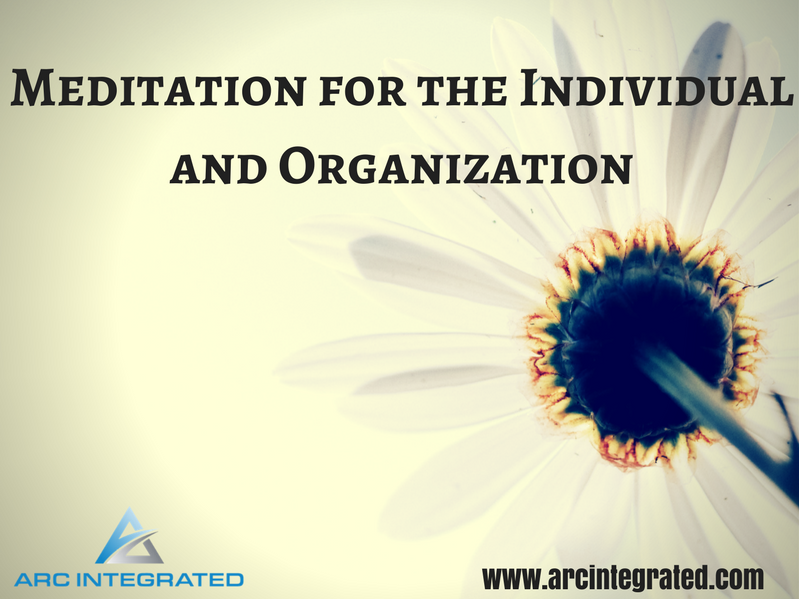
Meditation for the Individual and Organization – Arc Integrated
I have been meditating for some time. I have experienced a wide variety of meditation practices. Practices ranging from breathing exercises to guided meditation to qi gong, a Chinese based practice of held posture or soft movements related to energy cultivation. All of these have found to be valuable in particular ways. Mostly I practice Chi Kung in addition to daily seated meditation. See the link to learn more about my daily practice. However, this post is not about my daily practice. It’s about why meditation for the individual and organization are both so important.
Recently I came across a device call MUSE: The Brain Sensing Headband™ (affiliate link). The device is a headband that gives immediate feedback on brain activity through a synced app on your device. For a detailed account of the process see this link.
Basically, this device works through first calibrating your current brain state (different all the time of course) and sets that stage for how active your brain currently is. From there you get to pick the length of meditation, from three minutes to one hour, and a scene (rain forest or beach) that is associated with your meditation session. You get feedback through sound from the scene you choose. For example, crashing waves when active, soft waves when your brain is calm. In addition, you hear birds chirping when your brain is particularly calm.
When the session is over you get a detailed report of your session and how calm or active your brain was. The detailed account is presented in an easy to read graph of the ups and downs of activity during the session.
So the question may still be – what is the point of meditation? It’s a valid question, with many answers! Meditation has been shown to reduce stress, anxiety, depression and even improve productivity. Please see highlights below –
Meditation for the Individual
Meditation can have an impact on the body, mind and overall well-being. Below are just some highlights of the impact of meditation on the individual.
- Impact on Aging – According to a study at UCLA, they concluded that long term meditators had less age related gray matter in the brain.
- Management of Health Conditions – The Mayo Clinic sites meditation as having a high impact on both emotional well-being as well as helping people to manage symptoms of Asthma, High Blood Pressure, Heart Disease and more.
- Impact on Depression, Anxiety and Pain – In a meta-analysis last year at John Hopkins, researchers determined that mindfulness meditation practices had a moderate impact on depression, anxiety and pain. Here is another resource for how meditation can improve happiness.
- Meditation and Self-Control – In a study in 2013 by three universities, it is suggested that meditation training can have an impact on self-control and smoking reduction.
Meditation for the Organization
The impact of meditation on the organization can be significant. Implementing meditation can have an impact on productivity, absenteeism and even the bottom line!
- Impact on Absenteeism – According to an article by The Harvard Business Review – employees struggling with depression lose an average of 27 days of work per year. If we know that meditation can have an impact on depression, then this could be a way to improve absenteeism and ultimately save the company time and money.
- Impact on Disability – The World Health Organization estimates the depression will be the leading cause of disability by 2020 with heart disease as second. This means high cost to companies that don’t find ways to work towards helping employees reduce and manage such issues.
- Impact on Healthcare Costs and Productivity – Corporate mindfulness programs are on the rise. According to an article by The Atlantic, Aetna states that since instituting its mindfulness program it has saved $2000 per employee in healthcare costs and gained $3000 per employee in productivity costs.
- Meditation More Common in the Workplace – According to an article by The Society for Human Resource Management, meditation and mindfulness programs are being implemented into wellness programs more regularly because of the great benefits associated.
So how does all this great data relate back to MUSE™? Well, for a few reasons –
Meditation for the Individual and Organization
- Easy to Understand Feedback – The immediate feedback MUSE™ gives is unique when it comes to meditation. Often times when meditating it is harder to get immediate results, which is why it takes lots of practice. MUSE™ takes practice too, but offers a way to see the direction you are heading.
- Fun in Competition – Meditation is not generally competitive. However, with integration into a company’s wellness program, using MUSE™ in meditation, could be similar to running a challenge of healthy eating, walking or drinking water. For example, a race to get to 75% relaxation or a meditation for 30 days challenge.
- Measurable – For those individuals or organizations that want to see progress in a measurable fashion, MUSE™ could be a tool for this. Gathering data over time allows you to see where you started and how far you’ve come.
- An Introduction to Meditation – If you have never meditated you may have views, opinions or an image in your mind. This device takes some of the mystery out of the practice and allows for a glimpse into what is possible through calming your mind as well as the relationship between your mind and body. Any way to connect our understanding of how our mind impacts other aspects of our health, is a great opportunity for growth and development.
How have you found meditation to be helpful in your life or workplace?
Please share or comment below.
Thanks!
Michael
P.S. If you’re looking for more resources on stress reduction, mindfulness and adaptability, check out my new book – CHANGES – The Busy Professional’s Guide to Reducing Stress, Accomplishing Goals and Mastering Adaptability.
Maintain Change Through Coaching
I was thinking recently about my own personal philosophy about how to really maintain change when searching for it, as well as how I bring this philosophy into my coaching practice. As with most things I do, I take a holistic approach, which is the same for my coaching philosophy. The following ideas can be taken as a guide to maintain change through coaching as well as a guide to understand how I work as a coach.
When working towards change, particularly when it comes to personal development, it is important to see all the aspects that may be helping or hurting progress. We are complicated creatures. Working towards the best version of ourselves is not just about thinking in a different way or practicing good habits (although these are pieces of the puzzle).
True change comes from evaluating all the aspects of our human experience. When we look through all of our different lenses, we have the greatest likelihood for success. We need to explore how we think, feel, act, take care of ourselves, strengths we have as well what/who we surround ourselves with.
As a helpful reminder for you, I’ve created a way to remember how you can check to see if you are evaluating the different parts of yourself and what may be helping or hurting your progress. Consider the acronym CHANGE –
C – Cognition
H – Heart
A – Action
N – Nourishment
G – Greatness
E – Environment
Each part of this acronym has some important components to consider –
Cognition – The way we think. Do you analyze, make decisions quickly, not quickly enough, make strong judgments, think poorly of yourself or too highly perhaps? Both the way we think and what we focus on may be impacting our ability to change.
Heart – How we feel. Our emotions play a big part in our ability to be successful. If we can remain confident, happy, grateful, curious and positive then we may have a greater chance to work towards change. If we are negative, depressed, sad, angry, overly reactive or closed off from our emotions we may have a harder time moving towards the change we are working on. How we feel can also be related to our relationships and how they impact our ability to change.
Action – Habits and routines play a big role in our ability to change. Thinking and feeling are important but it is the actions that we take that impact how our feelings and thoughts change. Our action or inaction can play a big role in our ability to push things forward towards our desired outcome.
Nourishment – How we take care of ourselves. It is not news that the way we eat, how much we exercise, and our general lifestyle all impact multiple facets of our lives. This is the same for any change we are after. How we treat our body impacts our motivation, energy, creativity, strength and focus. Considering how we are nourishing ourselves is important.
Greatness – What are your strengths, purpose, and passion? This is what makes up your greatness. Exploring what is great about you not only leads to creating better leadership but also fulfillment, higher energy, better coping methods and a happier lifestyle.
Environment – What we surround ourselves with. I believe it was Jim Rohn who originally quoted – “We are the average of the 5 people we spend the most time with.” This is a powerful quote and I believe it to be relevant. When it comes to our own development, our environment goes beyond the people we are around. Our environment could be our family, work, our city, community, or how our house looks and feels. For example, if you know you function at a higher level when things are organized then keeping your house clean and in order may be an important factor in your own development.
All of these factors within the CHANGE acronym are important to explore during coaching. When I work with clients this is part of the process I take them through. My belief is that unless we focus on all of the potential areas that may be influencing our ability to make a change then we are leaving opportunity on the table.
It is also important to remember that any change one may be working towards takes time. Remember that there is a particular pace that change takes. Be kind to yourself along the way.
Enjoy the journey,
Michael
Purpose, Passion and Leadership
I was recently with a client and we were discussing coping methods. Coping methods are ways to deal with challenges that we face as well as ways we can help to reduce troublesome symptoms we are dealing with. There are many traditional coping strategies – breathing techniques, exercise, meditation, walking, art, distraction methods, spending time with others etc. Some of these techniques work well for some people while other techniques just don’t seem to fit. In my experience, the ultimate coping method is always the one that is most in line with the individual. This means that for a coping strategy to be most effective it has to connect with the person’s passion or purpose. What I want to address today is how passion and purpose is connected to leadership.
So what do mental health coping methods have to do with leadership? More than you think. Leadership is in the midst of a shift. This is mostly well known, however, old ways of leading still seem to be prevalent within some organizations. What we are finding through research and effective training programs is that true leadership comes from inspiration, not from authoritarian demands or unapproachable hierarchy that pushes work downstream without consideration of how it impacts others. True leaders are followed by those that are happy to be working for them because they feel inspired to do so. Effective leaders build the next generation of leaders within any system and work in a way that is fueled by purpose and resonance with the mission at hand.
According to research by the Center for Creative Leadership, survey results show that 84% of respondents in organizations see leadership changing in the last 10 years. The focus is shifting from an individual outcomes perspective to that of collaboration, teamwork and longer term objectives.
Another article by HR Magazine emphasizes that leadership is shifting towards less hierarchy and more inclusiveness and understanding of the needs of others. To build an inclusive environment, one needs to lead through effective listening, empathy and to be leading through inspiration rather than demand.
Even in some environments where leadership may looked at as a harsher more demand oriented situation, this is not always the case. For example, I was recently listening to one of Tim Ferriss’s podcast interviews where he interviewed General Stan McChrystal about his experience in the military. One of the questions was regarding what was one of General McChrystal’s pet peeves about how military life is depicted in the media. His answer was great! General McChrystal went on to discuss how even though he knew the stereotypical “hard” leaders in the military, that were cold, demanding and difficult to approach, this type of leader was less common. He went on to report that the most effective leaders, and the majority, led by inspiring their teams and those they were leading.
So the question remains what do coping methods have to do with leadership? Stick with me, we are on the way. Since we know that the most effective leadership methods have to do with inspiring and engaging others rather than cold, hard demands, then the first question is this –
How do we build leaders that inspire?
One answer to this is found in the search for finding ones ideal coping method. To be able to lead through inspiration means leaders have to understand what inspires them. Being inspirational is achieved through truly knowing your own passion and purpose and then pursuing it. Through creating congruence between what we value and how it is being expressed, we can explore our passion and purpose. The days of “do what I say not what I do” are fading away. Understanding what we are passionate about not only gives us an opportunity to be better leaders but also helps us to cope with stress and challenges more effectively. If we combine our contagious passion with our ability to self-regulate, people will be truly inspired.
Finding ones passion and purpose may be complicated. We may have some passions that are present in our professional lives and some that are more active in our non-work life. For instance, an organizational leader may have a passion for sales in the work world but also have a passion for lifting weights in his non-work life. This person may also know that they function at a higher level when they are actively pursuing both passions, in a sales role at work while using weight lifting as their non-work passion. This example of weight lifting may be this person’s coping strategy in dealing with work stress, conflict or anxiety. This person’s pursuit of this coping method not only impacts their ability to function outside of work, but makes them happier and more productive while in their work role.
Understanding what we are passionate about in and outside of work is important – and certainly impactful in both directions. Focusing on our strengths and where we exceed, in addition to tapping into what helps us stay balanced, will create a great expression of our passion and purpose, and allow us to become true leaders.
I’ll leave you with these questions below –
What is your passion or purpose?
How did you discover it?
How do you actively pursue it?
Best,
Michael
